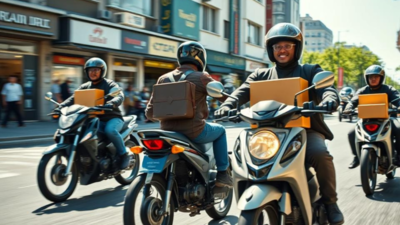India’s quick commerce industry is sprinting ahead in metros, but non-metro cities continue to trail behind, held back by weak demand, low digital adoption, and entrenched local shopping habits, according to a report by Redseer.The sector expanded nearly 150% year-on-year in the first five months of 2025, driven by aggressive rollout of dark stores, rapid category expansion, and intense competition. Yet, non-metros account for only a little over 20% of gross merchandise value (GMV), despite platforms having a presence in more than 100 cities, PTI reported.This share is significantly lower than their 60–70% contribution to the total retail market in the top 100 cities, highlighting both a large untapped opportunity and the difficulty of building a profitable business in these locations.Daily orders per dark store see a steep fall beyond the top 10–15 cities, dipping below 1,000 — and further under 700 in the next 20. According to Redseer, most non-metros tend to plateau before reaching 1,000 orders per day, underscoring sluggish demand in these markets.Challenges range from low digital literacy and trust in online platforms to sparse population densities and localised preferences that don’t align with standard quick commerce offerings.Consumers in smaller cities often maintain strong relationships with local kirana stores that offer informal credit and free home delivery, reducing the incentive to shift online. Meanwhile, the cost of servicing these markets remains high, as lower order volumes force larger delivery radii and higher payouts.These dynamics push up the breakeven throughput for dark stores in smaller cities by 1.5 to 2 times compared to metros, Redseer said. Education hubs like Prayagraj and Varanasi, and affluent towns such as Chandigarh, are bucking the trend with encouraging demand.“Quick commerce has unlocked incredible convenience in metros, but scaling it beyond demands more than just replication. Success in smaller cities will hinge on hyper-local strategies, deeper demand and supply understanding, and operational agility,” said Kushal Bhatnagar, Associate Partner at Redseer Strategy Consultants, the agency quoted.According to estimates by global consultancy Kearney, India’s quick commerce grocery market is likely to triple in size from 2024 to 2027, reaching Rs 1.5–1.7 lakh crore.
Trending
- HCLTech Q1 results: Net profit drops 9.7% to Rs 3,843 crore; revenue rises 8.1% to Rs 30,349 crore
- Who is R Doraiswamy? Meet LIC’s new MD & CEO; replaces interim CEO Sat Pal Bhanoo
- Move away from US: China exports emerge strong despite Donald Trump’s tariff chaos; is the record trade surplus sustainable?
- US markets today: Wall Street dips after Donald Trump announces new tariffs on EU and Mexico, investor eye earnings season
- India-US trade deal: Indian team reaches Washington DC for fresh round of talks; Donald Trump’s tariff deadline nears
- Want to boost your credit score? Follow these 5 steps to get home loans at lower interest rates – avoid common mistakes
- CPI inflation plummets! Retail inflation hits over 6-year low of 2.10% in June 2025; food inflation contracts 1.06%
- Malaysia AI chip export curb: Malaysia blocks export and transit of US-made AI chips, targets illegal shipments to China
- Jane Street ban, F&O mess: BSE, NSE shareholders lose Rs 1.4 lakh crore in market cap; what’s the outlook?
- Jane Street Sebi ban: F&O trade volumes drop nearly 20%; both BSE and NSE shares take a hit

